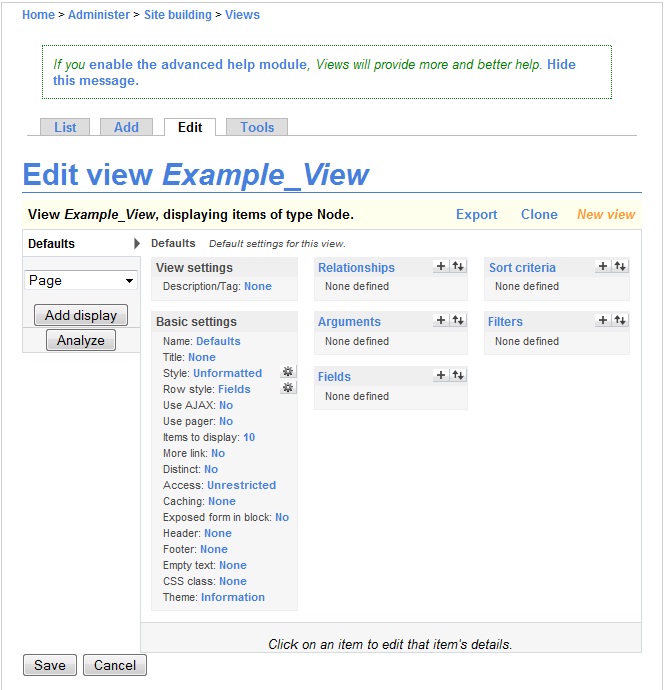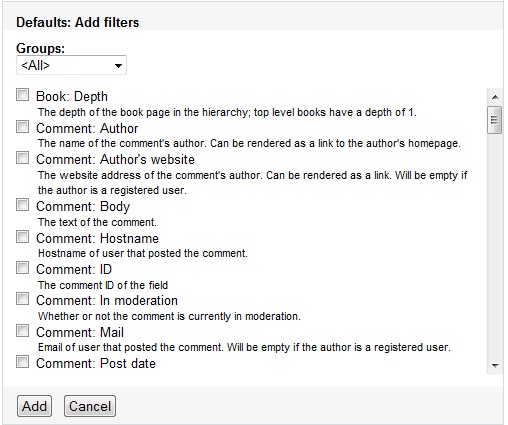Views
Views are one of the most useful and most important components of Drupal. A vast amount of information is available about views, so the information here will be an overview of the most basic functions. In short, views are content page filters that take sections of your information and present them in an organized manner. As an example, a view could be used to create a page showing the user profiles of all faculty member pages within your department.
How to Create a View
Views are created by going to Site Building -> Views -> Add View. Here you can add the name of the view, a description, and a type. For now, we will only discuss node views, which are the most commonly used. From here, we have a list of options that can be overwhelming. The two most important characteristics of a view are the "Fields" and "Filters" fields.

Filters are used to create conditions for which types of content sites are selected from your website. For example, you could filter out all content on your site except blog pages to create a page displaying all of your web blogs. Fields are used to choose what information from your selected content you want to display. The best example of this is a department directory page. Using fields, you could have a page that displays all of your faculty's contact information, or a page that simply has their name. This is the kind of flexibility that views provide.
When you click the "+" button under any category, a new box pops up underneath:

From here, you can choose what item you want to work with for the current argument type. For example, you could select the "Comment: Body" check box, and use it to sort out all pages with comments containing some word in their body.


